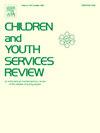The best interests of the child in professional assessments of contact rights when children are taken into care – An analysis
IF 2.4
2区 社会学
Q1 FAMILY STUDIES
引用次数: 0
Abstract
The Norwegian Child Welfare Services have faced criticism from the European Court of Human Rights (ECtHR) concerning restrictions on contact rights between parent(s) and children in care order proceedings. This has attracted attention in policymaking, which in turn has caused a shift in practice. This article explores how social workers weigh a child’s best interests when regulating contact rights since this shift. It is based on empirical data derived from a vignette study in which Norwegian social workers in eight focus groups assessed contact rights. The results show that an awareness of the child’s best interests is high on the social workers’ agenda. Nevertheless, they face a choice when the child’s best interests stand in contrast with other key principles. We identified the following considerations as influencing such assessments: 1) the child’s own voice, 2) parental visitation rights, and 3) extended family and network. The ethical challenges and complexities involved in such decision-making cannot be standardised. Social workers must navigate competing principles and weigh various aspects of a case, and the child’s perspective is only one theme to address. The tipping point appears to involve identifying the threshold at which additional contact imposes undue hardship on a child.
求助全文
约1分钟内获得全文
求助全文
来源期刊

Children and Youth Services Review
Multiple-
CiteScore
6.30
自引率
6.10%
发文量
303
期刊介绍:
Children and Youth Services Review is an interdisciplinary forum for critical scholarship regarding service programs for children and youth. The journal will publish full-length articles, current research and policy notes, and book reviews.
 求助内容:
求助内容: 应助结果提醒方式:
应助结果提醒方式:


